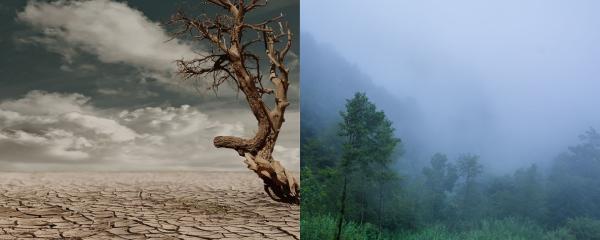
IIT Palakkad study shows how different indices used to predict drought combined with effects fof climate change can lead to different climate predictions for the future

IIT Palakkad study shows how different indices used to predict drought combined with effects fof climate change can lead to different climate predictions for the future
Different parts of the country was inundated with floods this year, while other parts continue to face rainfall shortages, leading to drought situations. The culprit behind the disparity may be the sudden, extreme rainfall events we have been facing. Warming temperatures leading to extreme events may be affecting the overall rainfall the country receives says this new study.
Qissa-e-Sanjan, or the Story of Sanjan, records the epic tale of Parsi migration. It describes how a section of Zoroastrians left Iran to escape the Islamic conquest, and found India’s shores at Sanjan in Gujarat. Instead of a welcome they were presented with a full glass of milk, which symbolically suggested that there was no space for the newcomers. The priest then added a spoonful of sugar without spilling the milk, a promise that the Parsis would assimilate with the local community. Like sugar in milk, the Parsis found a new home.
For over a century, India has nutured a host of science and technology based institutions. We capture the timeline of these institutions as they were established.
Rabies is a fatal disease associated with dogs. However, it could well be spread by many animals -- both wild and pets. Today, on World Rabies Day, here is all you want to know about the disease and ways to prevent them. But if you thought it was a challenge, find out the truth about this and help make the world free of this deadly disease
Lentil (Lens sp.) is an edible pulse cultivated as a staple food throughout the regions of India, Sri Lanka, Pakistan, Bangladesh and Nepal. It is an important dietary supplement in the Indian sub-continent. In a new study, scientists from the Indian Council of Agricultural Research (ICAR) have evaluated 162 genotypes including wild accessions, landraces, breeding lines and cultivars of lentil for their salt tolerance. This was based on four broad factors.
Cancer, as a disease, is a puzzle on its own and scientists across the world are looking for hints from all sides to crack it. Now, what if previous research on cancer itself acts as a hint and guides new developments? That is exactly what scientists have done using bioinformatics. By scouting previous research on circulating tumour cells, scientists have identified the molecules responsible for metastasis in cancer. This discovery, they believe, can help not only in understanding the spread of cancer, but also in identifying new drug targets against the killer disease.
Do you wish sometimes that you didn’t understand the consequences of cancer? The disease continues to terrorize mankind, mentally and economically. In order to develop therapy, you need suitable drug targets. Step in, non-B structures. These are simply, irregular DNA structures. A few examples of these structures are G-quadruplex or GQ, which is rich in guanine and intercalated motif or i-motif which is a guanine-rich and cytosine-rich DNA quadruplex. Several reports summarize that these structures could be related to genetic instability.
India as a nation is no stranger to the epidemic of diabetes. Most of us would know of someone in our extended group of family and friends, who is suffering from this ‘silent killer’ disease.
The art of doing science lies in logical thinking where research evidences chart the direction of evolving understanding of everything around us. Since, the people who do science, the researchers, are human, invariably, science is subject to our thinking biases and our behaviour. Now, a new study explores how the ‘human’ aspect of scientists can affect science and what biases can creep in the scientific community. Keeping an eye on these biases and involving this aspect in the process of doing science may result in better research, argues the researcher. Find more about these biases and their result on scientific epistemology.
The need for effective and rapid bone regeneration treatments is crucial now more than ever, due to the ever-rising number of bone defects and fractures. Conventional bone regeneration like grafts suffer from a shortage of available donors as well as added complications due to the immune rejection of the grafts.